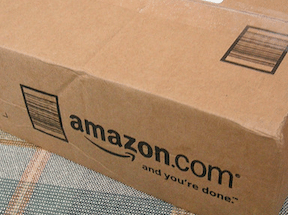Many new ecommerce businesses become overwhelmed with managing inventory and fulfillment. What started in a garage, with little fanfare, now requires more space and more organization. Perhaps the business is not presently big enough to open a warehouse or outsource to a third-party fulfillment center, but it needs more systems in place to succeed. What to do?
The key is to take a long-term view and set yourself up as if you’re running your own warehouse. Success will likely take you down one of two paths in the coming months or years: renting out your first storage space (and operating a small warehouse) or outsourcing the work to a fulfillment company.
The key is to take a long-term view and set yourself up as is if you’re running your own warehouse.
Either way, you should plan now to ensure success later. This article will describe items that need to be done now, to ease inventory and fulfillment bottlenecks. It will also review the items that need to be done before you open your own warehouse or outsource to a fulfillment company.
Organize Products
Start with ensuring that your entire product line is identified with a label — i.e., SKU, bar code, or UPC. Ideally, you want your products to arrive from the manufacturer with each item labeled and an outside carton labeled, too. If this is not the case, add this to your future to-do list.
Next, separate your inventory by product category and velocity (the highest moving items). Locate your items with the highest velocity in the easiest place to access. Preferably, only have one box of each item open to pick from. If you sell items in packs or kits, at a minimum keep these items together; optimally, create the kits in advance.
Product Identification
I’ll save the details of SKUs and UPCs for another time. But every item must have an SKU that can pass the “keep it simple” test. Too often, entrepreneurs create SKUs that are too long or too similar to each other. The entrepreneurs may not have a problem identifying them, but they could confuse a warehouse employee or a fulfillment center. A good test is to ask someone that doesn’t know your products to pick several orders and see how well he does. If you’re going to sell in the retail market at some point, add UPCs to your future to-do list.
Product Quantity
How much product to keep in stock is of one of the steepest learning curves that you will likely go through when growing your business. Maintaining the balance of a lean inventory (not tying up dollars) and satisfying customer demands is challenging.
There are multiple variables in play to manage this. But two early considerations are delivery time and reliability from the manufacturer or supplier. For the sake of the new entrepreneur, a good rule of thumb is to turn inventory at least four times per year. If your carton label doesn’t have a manufacturer’s date on it, add the month and year to the carton to easily identify how long it has been sitting in your storage.
Product Location
You will likely be able to avoid locating a product in a specific storage location for a while. Because you handle the product every day, you know where it is or if it migrated to another location. Add to your future to-do list, however, to consider picking by location. If you can experience this prior to moving to your own warehouse or outsourcing, it will help you manage in the future.
Product Selection
For the beginning ecommerce company, product selection isn’t typically an issue. But it’s amazing how quickly this often gets out of hand. Although the rules are not exactly the same, picture your inventory storage — your garage, or equivalent — as a storefront with limited space. You want the amount of space occupied in your storage to be items with the highest gross margin and the highest demand.
The typical mistake is to offer too many choices — for example, colors and sizes — of the item and therefore tying up too much money in inventory that isn’t generating sales. This will be on your future to-do list. The earlier you can understand the optimal number of products and SKUs in inventory, the better.
Packaging Material
Keep packaging costs down by minimizing the quantity of different boxes used and the different types of material used inside to fill the open space. Evaluate box size requirements against the DIM weight considerations — see my March article, “How to Manage UPS, FedEx Dimensional Weight Pricing.”
If you can get away with using USPS Flat Rate boxes, that’s a good option. The higher the retail prices of your products, the greater the expectation of your clients when it comes to box presentation. So if you’re using branded boxes, it’s critical to understand the costs involved versus the value it provides.




